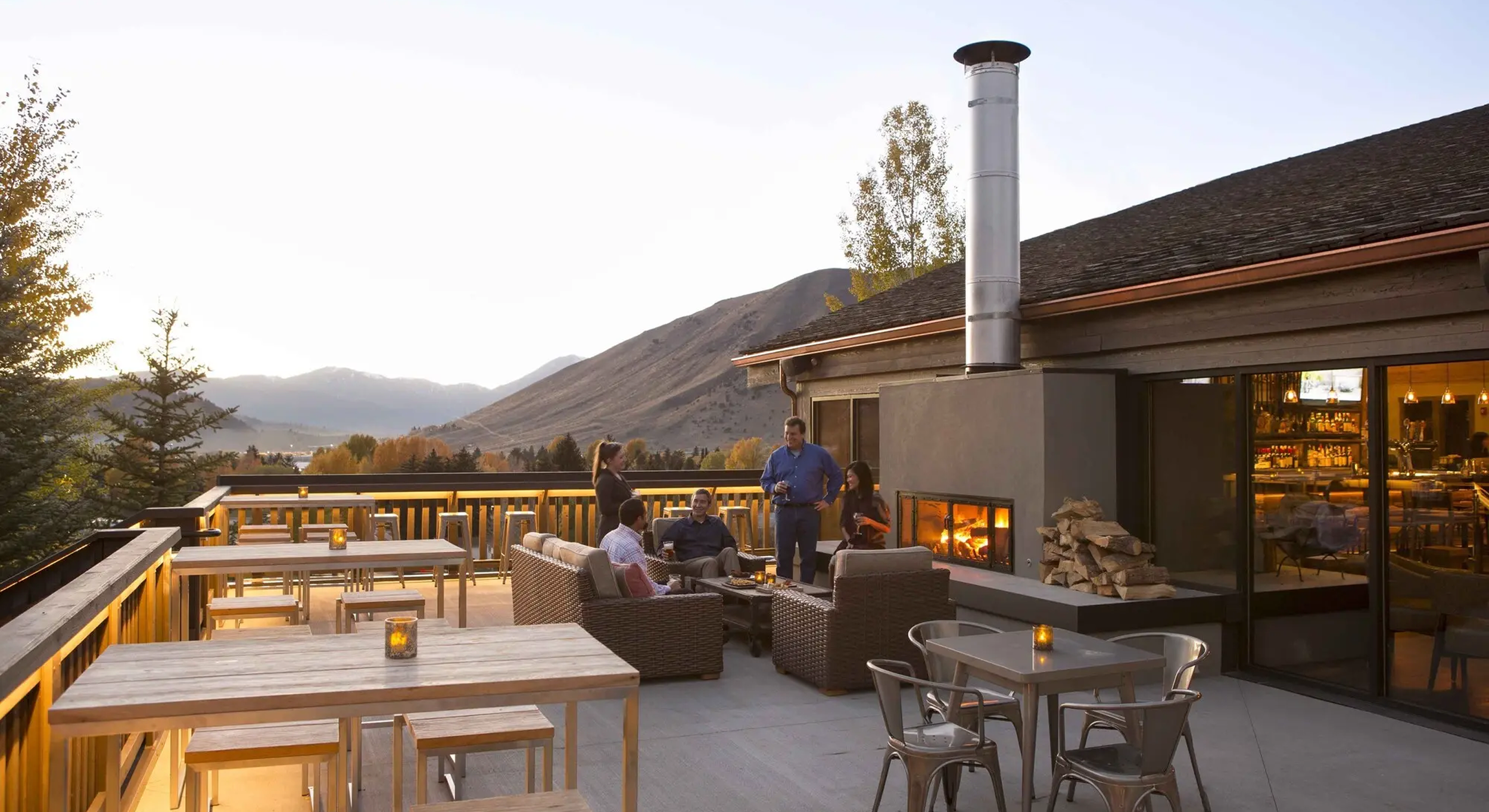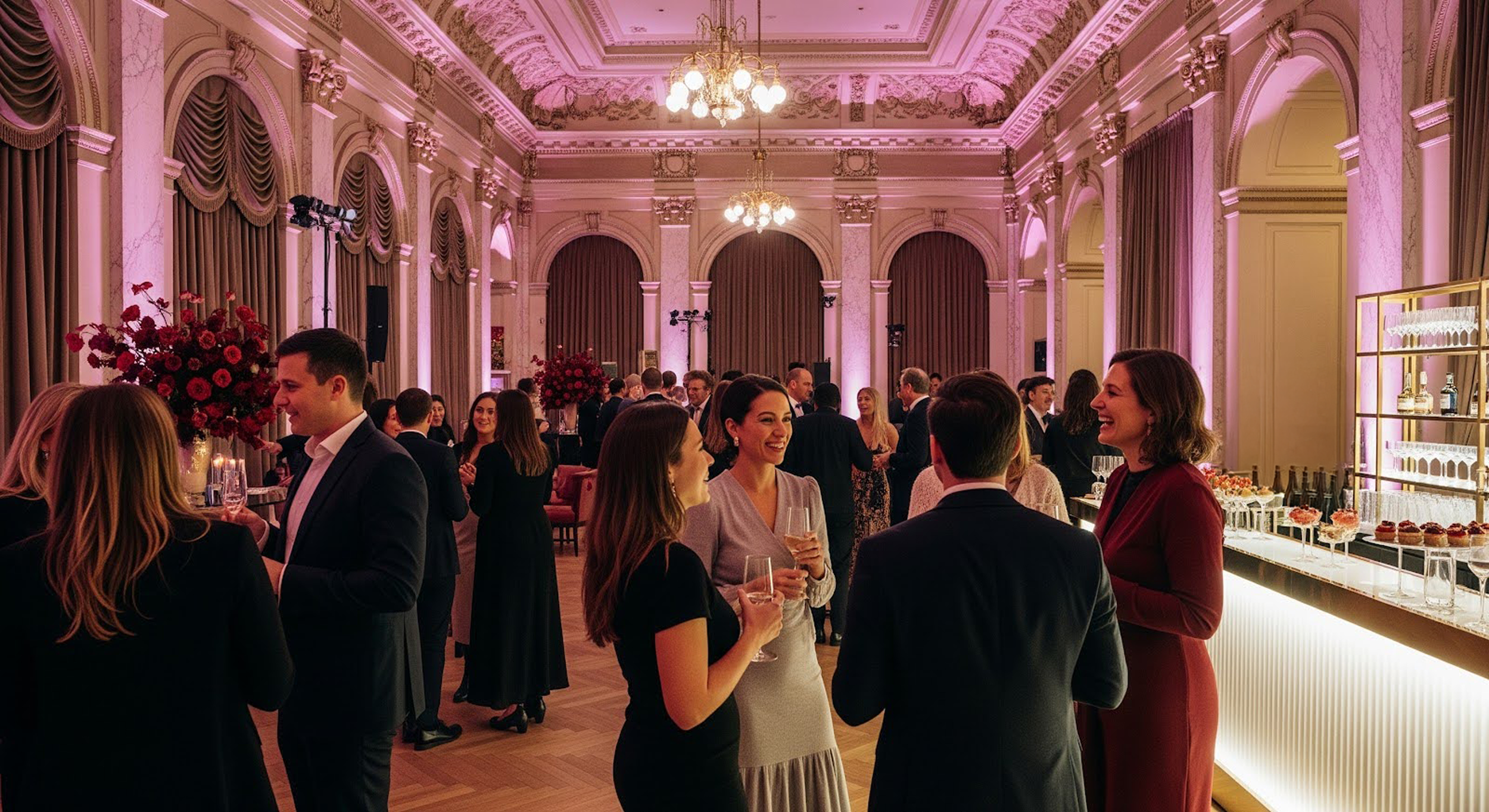The Transformative Power of an Event Strategy with Tavar James
News
The Transformative Power of an Event Strategy with Tavar James
Tavar James · 12/12/2024Events are no longer just line items in a budget, they’re a strategic investment to foster connection, energize your team, and amplify your mission. With a thoughtful approach, your 2025 events strategy can become a catalyst for achieving growth, innovation, and stronger organizational alignment. We sat down with Tavar James, BoomPop’s new Vice President of Events and Industry Advocacy, to learn about his journey to BoomPop and explore his advice for transforming your event strategy heading into 2025.
From Front Desk to Industry Advocate: Tavar’s Journey to BoomPop
Tavar James’s impressive career began as a front desk night auditor at a Courtyard by Marriott in Florida, where his talent for customer service and logistics quickly propelled him into leadership roles in hospitality. Over the years, Tavar transitioned into corporate event planning, managing everything from intimate board meetings to global conferences for thousands. His foray into tech introduced a new layer of innovation, leading global teams and focusing on event production and marketing. When BoomPop approached Tavar with a role combining technology, service, and advocacy, the fit was undeniable.
“It feels like all the different roles I’ve had in my career had a baby, and it’s this role,” he said. “The thing about BoomPop that I really love is that we are solving an issue in the events industry that no one has been able to solve, which is serving both the event planner and the organization holistically through technology. In this industry, most companies are either focused on the tech side or more heavily on the services side, but BoomPop is unique because we see both going hand in hand.”
With a passion for transforming the events industry and empowering teams, Tavar is now bringing his expertise to BoomPop to redefine what’s possible when it comes to leveraging the power of events for organizations everywhere.
5 Tips for Transforming Your Events Strategy in 2025
1) Align Your Events Strategy with Company Objectives
To maximize impact, your event strategy and cadence should support your company’s overarching goals. With this approach, events can become strategic tools you use to support key objectives, from boosting morale to enhancing productivity, strengthening client relationships, and motivating your sales team to hit their goals.
For example, take a look at your people team’s objectives, and align them with your team offsite strategy as a key way to drive employee engagement and retention.
“When your people feel good, they do good work,” Tavar noted. “Team-building events aren’t just about bonding; they directly contribute to smoother workflows and stronger collaboration.”
A savvy event strategy can be designed to support each of your company’s objectives across key functions and teams.
2) Make the Business Case for Events with the Right Data
Building a strong business case for your events strategy is essential heading into 2025. The best way to create one? Tavar advises tying event outcomes to measurable business metrics. For example, team-focused events should support metrics like employee engagement scores and retention rates, while customer and prospect-facing events should impact sales and growth goals. Tavar calls this a “return on objectives” approach.
“With events, it’s all about return on objectives, not just a return on investment.”
With this approach, events are seen as strategic investments that are essential rather than optional in supporting your company’s priorities. Tavar’s advice: Use post-event surveys, engagement metrics, and attendee feedback to highlight the tangible benefits of your events in addition to measuring the overarching company goals they support.
3) Harness the Power of In-Person Events
In today's distributed global workforce, in-person events have incredible power because they break from the norm of the day-to-day of virtual calls and office environments, creating a powerful and memorable element of novelty. They provide irreplaceable experiences of community and connection that are often lacking in the post-pandemic era.
“Something that we don’t talk about enough when it comes to team building is why in-person experiences are so important today. During the height of the pandemic, people became starved for connection, but people – and companies! – kept growing. Now there’s a tremendous need to connect and build relationships, and the companies that are investing in this are poised to leapfrog everyone else.”
Research suggests Tavar is spot-on. A Gallup study found that highly engaged teams show 23% greater profitability and are 18% more productive than disengaged teams. And in-person gatherings play a pivotal role in fostering this engagement, offering moments of connection that remote work often lacks. In fact, 88% of employees surveyed in a Harvard Business Review study said in-person meetings like company offsites are “critical for ensuring positive long-term relationships” among co-workers.
4) Prioritize Team-Building Events to Build Deeper Connections
Hybrid and remote work have changed how teams connect, making in-person team events more critical than ever for rebuilding trust and relationships. Use these opportunities to create meaningful connections and address the “lost time” from years of virtual-only interaction. After all, your team is your biggest investment - and your biggest asset in helping you achieve your company goals. Investing in a strong team is critical in helping meet the rest of your goals for 2025.
“Team building now needs to make up for lost time. Leaders need to acknowledge everything their employees went through during remote work and focus on building real connections.”
5) Use Technology to Streamline Planning
Leveraging the right combination of technology and support is another area teams should consider when it comes to elevating their events strategy going into 2025. Not only can technology like BoomPop help reduce the administrative burden of event planning, freeing up planners and operations teams to focus on creativity and strategy, but these models can also help teams significantly reduce other costs by negotiating with hotel and vendors on your behalf.
“Most event planners love being planners—except for the administrative work. At BoomPop, we’re solving that by streamlining the tactical side, letting planners focus on strategy and experience.”
For those juggling multiple responsibilities, a model that combines powerful technology with expert services (like BoomPop!) can make events easier to manage, even for those without dedicated event planning expertise.
The Future of Event Strategy
As the events industry continues to evolve, staying ahead requires a mix of strategic thinking, technology adoption, and fostering meaningful human connection. With Tavar James leading BoomPop’s world-class events services Center of Excellence and influencing industry-leading innovations on our product roadmap, we are ready to help companies like yours elevate your events strategy to new heights. Stay tuned for more insights and expertise from Tavar and the BoomPop team to make 2025 the year of unforgettable experiences.
Want to learn more about working with BoomPop to plan your next company event? Contact us today for a free consultation.






















